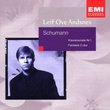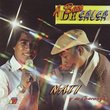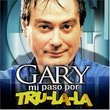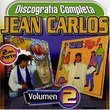| All Artists: Earle Brown, John Cage, Morton Feldman, Christian Wolff, New York School, Eberhard Blum, Frances-Marie Uitti, Nils Vigeland Title: New York School Members Wishing: 4 Total Copies: 0 Label: Hat Hut Release Date: 4/11/1994 Genres: Jazz, Classical Styles: Avant Garde & Free Jazz, Historical Periods, Modern, 20th, & 21st Century Number of Discs: 1 SwapaCD Credits: 1 UPC: 7619925610121 |
Search - Earle Brown, John Cage, Morton Feldman :: New York School
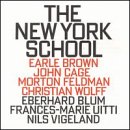 | Earle Brown, John Cage, Morton Feldman New York School Genres: Jazz, Classical
|
Larger Image |
CD DetailsSimilar CDs
|
CD ReviewsThe avant-garde can be beautiful scarecrow | Chicago, Illinois United States | 01/11/2005 (5 out of 5 stars) "Although not directly intended,The avant-garde can be beautifully seductive and all the pieces on this unavailable CD proves it.The concept of "beauty" was not a strong category during these innovative times of the post-war generation. In fact composers were quite arrogant that all sounds now are acceptable, all forms all procedures had relavance.We come to see some indulgences here as composers merely laying their scents to mark ot theoretical territories. The Cage School being no different than anyone else.
We have three seasoned performers as well, Frances Marie Uitti has worked with Cage, and certainly knows this repertoire, and brings a real sensitivity to the extended techniques of the violoncello,noise making as well. It is difficult to say that for all devoted performers who make this music part of their performative lifeworlds. For instance Arditti really have no direct feel for Cage, it is always too deterministic and goal bound when in fact there are no goals to explore. It seems it is difficult simply appraise to relesh in the pure perception of a string timbre. Earle Brown's 'Folio' was a compendium of graphic materials to be utilized for music, for any instruments.It is usually combined with his "Four Systems,actually four fields of graphics that can be read left to right, right to left, or turned up-side-down, and read inreverse, backwards. The musicians adopt ground rules on how the elements and parameters are landed upon, register, length, sustainability, timbre, articulation,and ultimate choice of instruments is all depended on the performers, Here all three share their skills together. This is difficult music to listen to, especially since we have had all countless experiences a steadt diet of "prettified" minimalism,and nebulous popular forms and other forms of ultimate escapism,White musicians dabbling in various multiculturalisms from the vigours of modernity. WEll it was necessary I suppose. But we don't have to be thrilled about the results. Modernity still has some dimensions to teach,and all music written since that consideres itself progressive would be inconceivable without modernity's torch.And as this music still attests, (for instance the late music of Morton Feldman the long durational pieces (Triadic Memories, The Second Strong Quartet) really would not have been possible without these early innovative pieces to open a vein for this beauty.) Brown's "Music for Cello and Piano" is written out and is an early work. Brown's aesthetic his interests were somewhat in the center of the Cage SChool, the procedures and processes of indeterminacy, graphic notation. He wanted to control his works up to certain points, and as time wore on Brown sought greater and greater controls when his works found no interesting interpretations. This is a real duet, where exposed threadbare lines are simply beautiful still modern that finds a voice today, still grappling with the fascinations of jumping registers, fast quick changes of timbre. The Cello here utilizes the full pallette of timbres, plucked, harmonics, harmonics plucked, sul ponticello, left hand pizz. Cage's 'Variations I'for any number muscicians is a process piece where you simply supply the readings from measurements the musician takes from the score, the score is simply a set of instructions for making these measurements, of distances, registers, densities, that determines the tones played and the lengths of those tones.There is no coordination of parts either. Cage once told Schoenberg his second music teacher that he would maintain his fascinations(committments) of/to the genre "variations" a genre that has come to identify in a way the vigours of modernity from the dodecaphonic globe. All the Feldman pieces here are from the Fifties and Sixties,He wrote sets of "Extensions", "Durations" and "Projections" for mixed chamber settings and solos. Here again Uitti brings a wonderful,sense to sparce, threadbare lines for the cello and piano, it is not so much accompaniment, for the concept had no function within this context.Feldman early reveals his interest in sculpting each chord each tone each register, each had a place for him The Solo here is from Cage's "Concert for Piano and Orchestra" was sort of an encyclopedic display of graphic notation(s),and the various "Solos" for orchestral instruments can be used to "accompany" really to "play with" the piano,or to beutilized as a "Solo" to be played as a "solo" there is no concept of "concerto" here, it is a parenthetical term here. Blum uses Flute, Alto Flute and Piccolo, as long as the instrument can cover the range it doesn'y matter what flute actually plays these tones. The events are farely predictable,yet what we come to define as the avant-garde, each tone is has its own life, and need not be realted to any subsequent tone. I guess as the script goes, the listener is then placed with this heavisome existential burden of making sense out of all this, or not making sense as the case may be. The prepared piano after Cage's early work culminating in the "Sonatas and Interludes" sort of went into disuse, I really cannot think of a vibrant repertoire that has(had) emerged from this gorgeous instrument. The fact that Christian Wolff here wrote a piece, only disappoints the repertoire in that he should have written much more for this neglected instrument. Here he mixes prepared tones with unprepared ones, utilizing the clean single threadbare tones in the upper reaches of the piano. It is again quite beautiful and disarming breathtaking. The 'For 1,2, or 3' was Wolff's first graphic piece that became his most widely played work and a primary work displaying his understanding of graphic natation procedures yet lending his own voice within this context. Many of his subsequent works became measured against.He later developed this technique, the materials and graphic icons in much more ambitious works, as "Burdocks"" |

 Track Listings (16) - Disc #1
Track Listings (16) - Disc #1